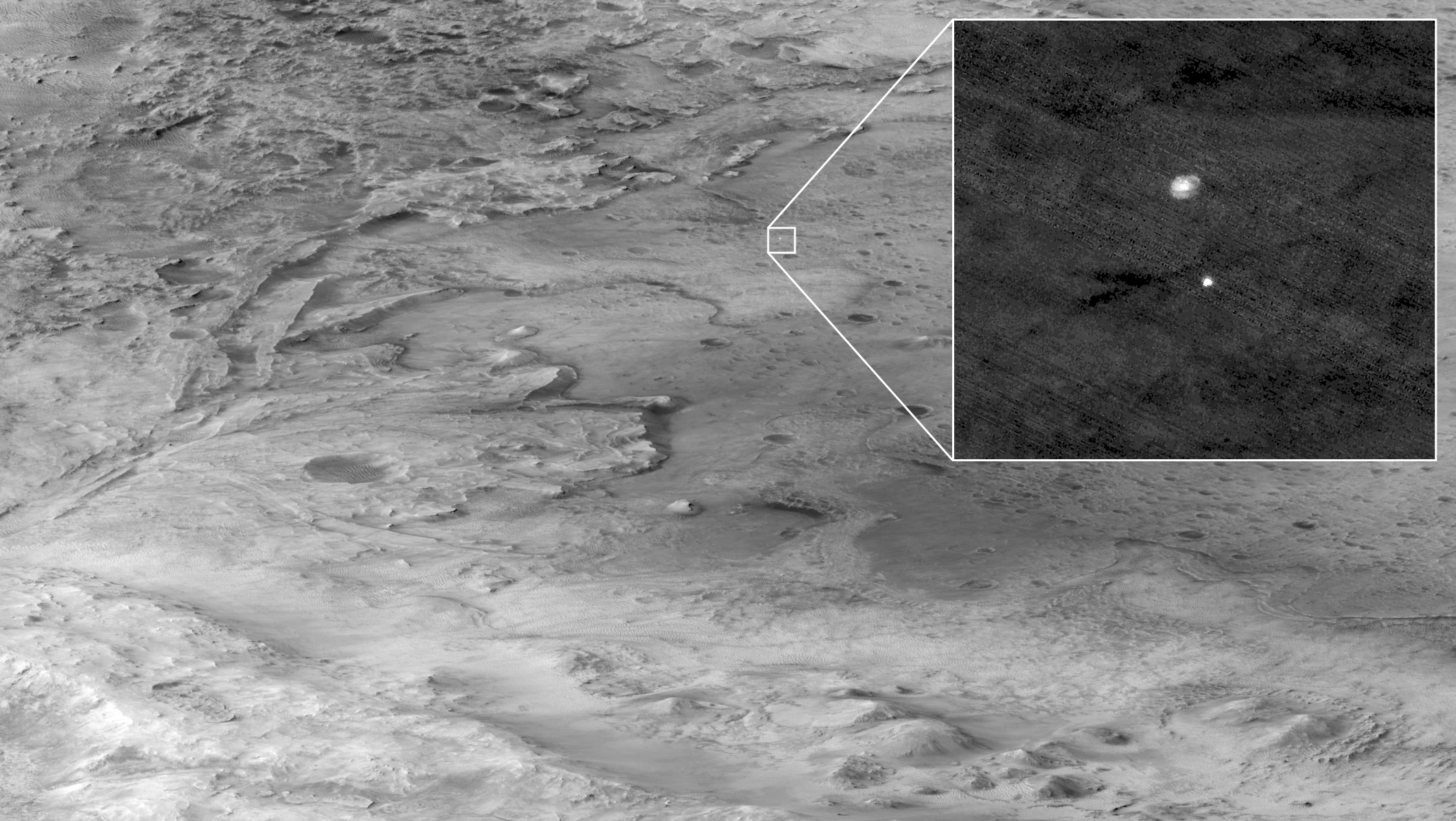NASA has released the first high-resolution images sent back by the Perseverance Mars rover, including a dramatic picture taken by the Sky Crane landing vehicle of it just before touching down on the Red Planet. The image was a still from a video of the landing that is still being received and processed.
Perseverance may be the most advanced spacecraft ever to have landed on Mars, but it is a 21st century robot with a 20th century limitation. It has multiple color cameras, state-or-the-art onboard computers, and even a microphone for listening to the Martian environment, but all of the data that it collects has to be sent back to Earth through a radio link that is notoriously low on bandwidth that which has waited decades for an upgrade.
As a result, the high-resolution images and videos that the nuclear-powered rover is collecting have to be sent back a bit at a time along with systems' telemetry, often relayed by other Mars orbiter spacecraft. Though the images are exciting, it's the telemetry that NASA engineers are more concerned about as they assess the health of Perseverance after its landing, which involved the spacecraft carrying it hitting the Martian atmosphere at hypersonic speeds and the robot being winched down from the hovering Sky Crane rocket platform.

Along with the landing image, NASA also released a snap taken from the Mars Reconnaissance Orbiter (MRO) as Perseverance landed, a fish-eye color picture of the landing site terrain, and an image of one of the rover's six wheels, which will propel it across the floor of Jezero Crater.
According to the space agency, it will be over two months before Perseverance starts its proper science mission. In the meantime, engineers must make a detailed analysis of the rover's systems, update its software and test the scientific instrument package. On Friday, explosive bolts were fired to release the camera mast, which will be raised on Saturday. This will be followed by the deployment of the robotic arm, a short test drive, and the deployment of the first ever helicopter to operate on another planet.
Source: NASA







